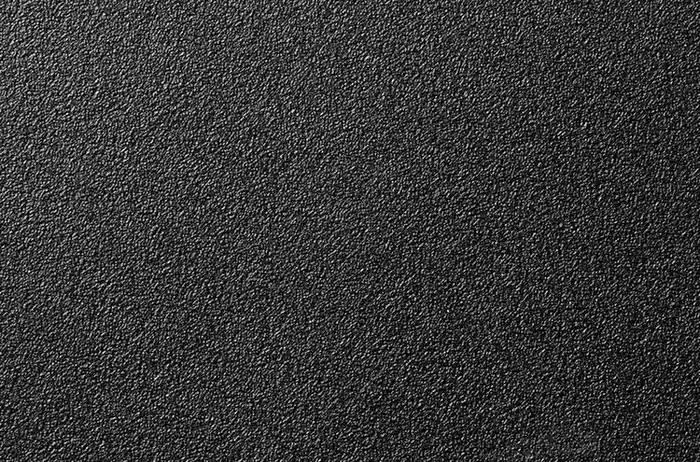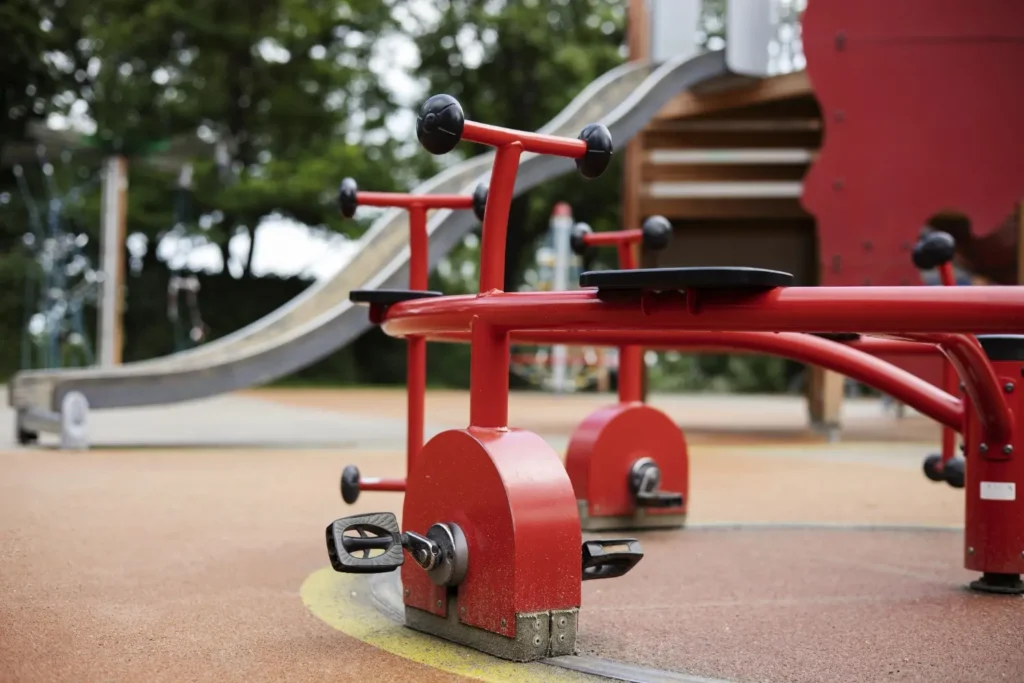Thinking about upgrading tired concrete, cracked asphalt, or a slippery pool deck? Rubber paving delivers a modern, resilient surface that looks great and performs even better. Made from recycled tire granules bound with polyurethane, it’s flexible, slip-resistant, and designed to thrive in freeze-thaw climates. Best of all, it can be installed over many existing substrates, saving demolition time and budget compared with traditional asphalt repair or full-scale Concrete Construction. For property owners and facility managers, this solution offers a balance between durability, aesthetics, and sustainability. In this guide, you’ll learn what rubber paving is, how it’s installed, where it shines, and how it stacks up against conventional materials. (Curious about the material science? See a neutral primer on rubberized asphalt.)

What is Rubber Paving?
Definition and key features of paving
Rubber paving is a site-cast, trowel-finished surface made from recycled tire crumb mixed with a durable binder. It creates a cushioned, non-slip layer that adheres to sound substrates like concrete, asphalt, pavers, and even properly prepared wood. Hallmark features include high elasticity (resists cracking), excellent traction when wet, UV stability with the right additives, and easy spot-repairability. This makes it not only a practical option but also a future-proof investment for both residential and commercial properties. Unlike rigid paving, it offers a unique combination of safety, sustainability, and style.
How rubber paving is made
Manufacturers shred end-of-life tires into granules, screen for size, and blend with a polyurethane binder and pigments. On-site, installers combine the components to a precise ratio, then place and trowel to thickness-typically 10-18 mm for foot traffic and greater where vehicle loads are expected. The result is a seamless, resilient finish that bonds tightly to the primed base. Because the color runs through the entire mixture, it remains vibrant even with years of exposure. This unique production process makes rubber paving highly adaptable and long-lasting.
Applications: driveways, patios, sidewalks, playgrounds
Because it’s flexible and forgiving, rubber paving excels on residential driveways, commercial walkways, patios, ramps, pool decks, splash pads, and playgrounds requiring impact attenuation. It’s also an upgrade for aging surfaces that don’t justify full-depth reconstruction-an attractive alternative to extensive asphalt repair or new Concrete Construction. Schools and municipalities often choose it for playgrounds because of its fall safety ratings. Businesses appreciate the slip resistance for customers and staff in wet or icy seasons. In short, it is one of the most versatile paving solutions available today.
What are the Benefits of Rubber Paving?
Durability and weather resistance
Elasticity allows rubber paving to expand and contract with seasonal movement without telegraphing cracks. It damps impact and vibration, resists raveling, and shrugs off winter salts better than many rigid surfaces. In freeze-thaw regions, that flexibility translates into fewer surface failures and longer intervals between interventions. Compared to asphalt, which often needs patching, or concrete, which can spall and crack, rubber paving remains intact. For property owners, this resilience means fewer unexpected repair bills and more consistent surface performance over the years.
Eco-friendly aspects: recycled tires and sustainability
Each project diverts a meaningful volume of tires from landfill, supporting circular-economy goals. The ability to overlay existing slabs reduces demolition waste and trucking, lowering the project’s embodied impacts compared with tear-out and rebuild approaches. Beyond environmental stewardship, many organizations value the green story that rubber paving communicates to clients and stakeholders. It becomes part of a company’s sustainability initiative. Choosing recycled surfaces demonstrates responsibility and forward-thinking values in an increasingly eco-conscious market.
Safety features: slip resistance and shock absorption
The textured, rubberized surface offers confident footing in rain, around pools, and during shoulder seasons when black ice can form. Its inherent cushioning also reduces the severity of slips and falls-one reason it’s popular for playgrounds and senior-access routes. Compared to concrete or asphalt, the reduced impact forces from a fall can be significant. For businesses, this means reduced liability and enhanced customer trust. For homeowners, it’s peace of mind for families, children, and visitors alike.
Customization: colors, patterns, and design options
From muted architectural palettes to bold blends, installers can broadcast chips, set borders, or integrate logos. Unlike paint that flakes, the color lives in the matrix, so aesthetics last with minimal upkeep. Designers can choose combinations to match branding or landscape design. This makes rubber paving not only functional but also a way to showcase creativity. Whether you want a natural stone appearance or a vibrant modern look, customization options are virtually limitless.

What are the Disadvantages of Rubber Paving?
Higher initial cost compared to asphalt
Upfront pricing typically sits above basic hot-mix overlays. However, the ability to overlay and the low maintenance profile can narrow lifecycle costs versus repeated asphalt repair cycles. Some property owners may hesitate at the starting price, but many find the investment pays back through savings on long-term repairs. Additionally, reduced downtime for installation means quicker returns to normal use. It is important to consider both initial and lifecycle costs before making a final decision.
Unique aesthetics not for everyone
Rubber’s slightly textured, monolithic look is distinct. For projects requiring the exact appearance of broom-finished concrete or exposed aggregate, you may prefer traditional Concrete Construction. While customization options exist, some may find the appearance unconventional. Still, this uniqueness can be an advantage for those who want something modern and distinctive. As tastes evolve, rubber paving’s look is becoming more widely accepted in both residential and commercial contexts.
Installation requires professional precision
As with any resin-bound system, substrate prep, moisture control, and mix ratios matter. Experienced installers ensure proper priming, thickness, and curing for long-term performance. Poorly executed installations may lead to unevenness or premature wear. That’s why choosing a skilled contractor with experience in rubber paving is crucial. A professional job ensures the surface performs as intended for decades.
Is Rubber Paving Expensive?
Cost comparison: rubber paving vs asphalt
While basic asphalt can be cheaper up front, it often requires periodic sealing and earlier crack remediation. Rubber paving’s overlay capability avoids demo/disposal and can reduce future maintenance visits typically associated with asphalt repair. This makes the long-term cost curve favorable. For large areas, the investment can also be spread out over phases, which helps with budgeting. Many clients find the reduced disruption and lower upkeep offset the initial cost difference over time.
Cost comparison: rubber paving vs concrete
Decorative concrete finishes (stamped/colored) can equal or exceed rubber paving costs. Rubber often wins on speed of installation, comfort underfoot, and winter traction-important where safety and downtime matter. Unlike concrete, which often requires days of curing, rubber paving is ready within 24-72 hours. This speed translates to convenience, particularly for businesses that cannot afford long closures. For many projects, the value proposition becomes obvious after the first winter.
Long-term savings on maintenance and repairs
Routine care is simple-wash, spot-repair if needed-no sealing cycles or re-striping (except where traffic markings are specified). Over a decade, those avoided tasks can level the budget playing field. Moreover, the durability of rubber paving means fewer interruptions for repair crews. This is a critical advantage for high-traffic areas where accessibility must remain constant. Long-term, rubber paving can be one of the most cost-effective paving options available.
How Long Does Rubber Paving Last?
Average lifespan and performance in harsh climates
Well-installed systems routinely deliver 15–25+ years, with strong performance in freeze-thaw and de-icing environments. UV-stable pigments and binders preserve appearance in high-sun locales. Its resilience means it can survive both scorching summers and freezing winters without significant degradation. Unlike traditional surfaces, it adapts to seasonal shifts rather than failing because of them. This adaptability translates to confidence for owners and reduced need for costly interventions.
Maintenance requirements for extending lifespan
Keep the surface clean, protect from harsh solvents, and address point damage promptly. Localized repairs blend seamlessly, preserving the monolithic look without large-area replacement common to rigid surfaces. Periodic cleaning is simple with a hose or pressure washer. Unlike asphalt or concrete, there is no sealing schedule to follow. This ease of care ensures that even non-technical property owners can maintain the surface properly.
Real-life examples and case studies
From driveways installed decades ago to municipal walkways and schoolyards, rubber paving has proven staying power when substrate, prep, and placement are correct. For example, many early projects from the late 1990s still function today with minimal intervention. Case studies consistently show reduced cracking, better winter traction, and satisfied property managers. These long-term examples demonstrate the credibility of rubber paving as a permanent solution. Its track record continues to expand across climates worldwide.
Installation Process of Rubber Paving
Preparing the surface
Installers evaluate drainage and substrate soundness, then clean, dry, and prime. Structural issues (heaving slabs, base failures) are corrected first-sometimes via targeted Concrete Construction or localized asphalt repair. Proper preparation ensures adhesion and longevity. This stage often determines whether the project succeeds or fails. A strong base means decades of reliable performance above.
Mixing and applying rubber granules
Granules are mixed with binder to spec, placed, and troweled to uniform thickness. Edges, transitions, and drains receive special attention to promote positive flow and durability. Installers often blend custom colors or create decorative borders at this stage. The flexibility of the mixture allows shaping around complex layouts. Proper mixing and application are critical to avoiding weak spots or uneven curing.
Setting and curing time
Typical walk-on readiness is ~24 hours, with vehicle-ready in ~48-72 hours (ambient dependent). That rapid return to service limits operational disruptions compared with full replacement. The speed of curing also reduces labor costs, since crews can complete multiple projects efficiently. Business owners particularly value this quick turnaround. For homeowners, it means minimal inconvenience and almost instant upgrades to curb appeal.
Rubber Paving vs Traditional Paving Materials
Rubber paving vs asphalt
Rubber is more forgiving to substrate movement and resists surface cracking; asphalt is strong in heavy-load lanes but may need recurrent sealing and periodic asphalt repair. Rubber also offers superior slip resistance and comfort. Asphalt is common due to lower upfront costs, but long-term upkeep often erodes those savings. Rubber paving fills the niche for those who prioritize longevity and safety over initial cost savings.
Rubber paving vs concrete
Concrete delivers high compressive strength and crisp architectural edges; rubber excels in comfort, traction, and fast overlays without demolition-especially where a quick refresh beats a full Concrete Construction replacement. Concrete can be decorative but often fades, cracks, or spalls over time. Rubber paving maintains color and flexibility. For projects prioritizing safety and sustainability, it is often the better long-term solution.
Why choose rubber paving for modern projects
When sustainability, safety, speed, and lifecycle value matter, rubber paving is a compelling specification-particularly for overlays, wet environments, and high-footfall spaces. It represents a modern answer to the shortcomings of older materials. Property owners find that it communicates innovation and responsibility. Clients and visitors notice the comfort and design appeal. It’s a solution that blends performance with purpose.
Conclusion: Is Rubber Paving Right for You?
If your priority is a safer, quieter, low-maintenance surface with fast installation and a smaller environmental footprint, rubber paving is worth serious consideration. For projects demanding rigid performance or a traditional broom finish, conventional Concrete Construction or targeted asphalt repair may be the better fit. Not sure which route to take? A site walk and substrate assessment will quickly clarify the smartest path forward. Contact our team today to learn more, request a consultation, or get started with your paving project: ProZone Contact Page.
